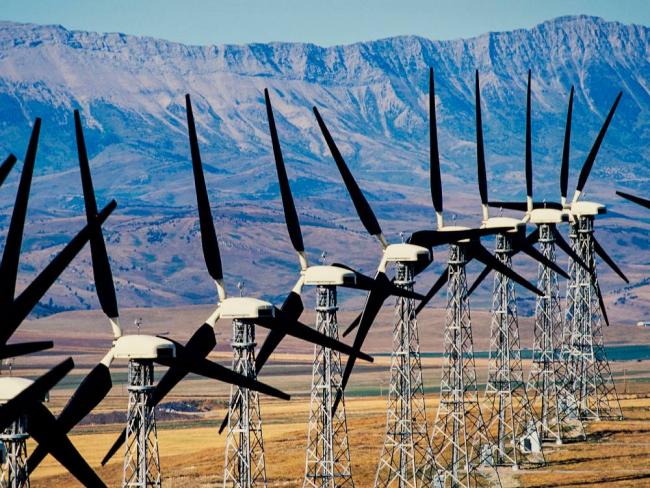Articles Menu

Aug. 6, 2024
It should come as no shock on the first anniversary of the United Conservative Party government’s seven-month freeze on renewable electricity projects that the policy has resulted in a deep chill on renewables.
That was, of course, the idea.
A new analysis by the Pembina Institute released last week shows that in the 12 months since the unexpected moratorium on wind, solar, hydro, biomass and geothermal energy projects was announced a year ago, a total of 53 applications for projects that would have added to the province’s electricity grid were withdrawn.
“Our research finds 33 projects that were in the queue prior to the announced moratorium have since cancelled,” the Calgary-based clean-energy think tank said in a news release.
“These projects would have generated approximately the same amount of power as is used by 98 per cent of Alberta homes annually.”
On Aug. 3 last year, the government’s announcement seemed strangely disorganized, as if the communications professionals in several government departments didn’t know it was going to be made much before the rest of us heard the news.
We’ll never know for sure, of course, but this likely means the scheme to stymie renewable development was cooked up by Premier Danielle Smith and some of her closest advisers — folks like Rob Anderson, her former Wildrose party deputy leader and the current executive director of her office, who is on record calling solar and wind electricity generation facilities “butt ugly” and “a scam.”
For her part, in a Calgary Herald op-ed Smith sarcastically wrote: “For years, the green movement would have us believe it was possible, and even desirable, to have an energy grid powered entirely by wind and solar, producing free, clean energy forever and ever, amen. We would switch to electric cars and electric heating and all our energy needs would be met. When the wind was blowing and the sun was shining, we’d use what we needed and store the rest and Mother Earth would look upon us and say it was good. But it is not good.”
There’s plenty more where that came from, but the bottom line is that the current leaders of Alberta dislike renewable energy projects not so much for their esthetics — which did indeed upset a few of their most influential supporters with nice views of the Rocky Mountains in far southwestern Alberta — as for the damage their existence does to the UCP narrative that there is no alternative to fossil-fuel-generated electricity.
At the end of August 2023, Pembina estimated that $33 billion in investments and 24,000 jobs had been put at risk by the unexpected moratorium.
“Most of the moratorium’s impacts on the sector’s growth won’t be seen until 2025 when fewer renewable energy projects are built,” Pembina analyst Will Noel, one of the report’s authors, said in last week’s news release.
Since the surprise announcement, the UCP government has further depressed investors’ interest in renewable projects in Alberta by announcing there would be new limits on where renewable projects could be located — to prioritize agriculture land, protect “pristine viewscapes” (if they happen to be visible from the front window of one of their supporters’ homes, anyway) and ensure site reclamation when the facilities are taken out of service.
Oddly — or not so oddly — such concerns do not seem to trouble the UCP nearly as much when it comes to reclaiming oil and gas drilling sites, orphaned or otherwise, or letting Australian mining interests demolish entire mountains.
A general outline of the new restrictions was published in a government news release in February, but the fine print — presumably intentionally — remains in development.
The Pembina Institute pleaded for clarity because the lack of clear details “appears to be deterring new investment in Alberta.” While the freeze officially ended in February, the institute noted, “as of the end of July, only three solar projects totalling 13 MW and zero wind projects have applied to the AESO” — the Alberta Electric System Operator, responsible for the operation of the province’s electric system.
Utilities Minister Nathan Neudorf, finding himself unable to argue that the paper’s authors had counted wrong, accused the institute of counting the wrong things.
“The Pembina Institute is ignoring the reality that not every proposed energy project leads to shovels in the ground,” he complained in a media statement reported by the Canadian Press, tossing in colourful accusations that the report is “misinformation” and “intentionally misconstrues the facts.”
“Alberta continues to be a leader in renewable energy and jurisdiction of choice for investors,” he insisted.
Meanwhile, south of the international boundary, wind and solar projects in the pipeline (if readers will forgive the inappropriate metaphor), have been growing by leaps and bounds — 23 per cent between January 2023 and January 2024, compared with only six per cent in Alberta.
“Even after taking into account that the U.S. is roughly 69 times larger than the population of Alberta, the province’s 2024 queue would still need to see 897 MW of new applications to keep pace on a per capita basis,” Pembina said.
“The number of projects cancelled in Alberta, contrasted with the renewable energy capacity being added elsewhere, suggest renewable developers will look for other jurisdictions where there appears to be less political risk associated with these investments, such as some U.S. states,” Noel said.
David J. Climenhaga is an award-winning journalist, author, post-secondary teacher, poet and trade union communicator. He blogs at AlbertaPolitics.ca.
[Top photo: A wind farm in Pincher Creek, Alberta. The government’s moratorium resulted in cancelled projects across the province. Photo via Shutterstock.]